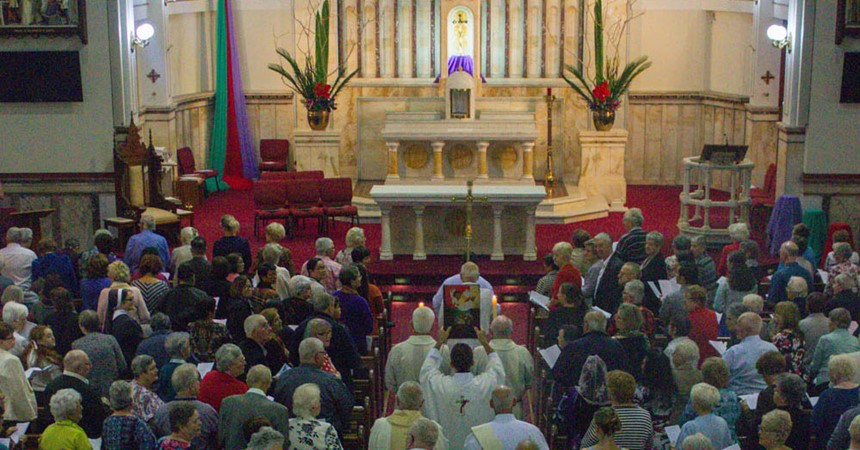The Gathering Song is one of the most important pieces of music of the Mass. This is because it sets the whole tone for the liturgy in a similar way that the overture sets the mood for an opera or ballet. But the gathering song does not do this simply by how it sounds but more importantly by how it is sung.
In some parishes, the gathering song lasts only as long as it takes the procession of ministers to get from the front door of the church to the altar. In this case, only one or two verses of music is sung. This makes the gathering a mere perfunctory act and puts the value of efficiency over the real purpose of the gathering song.
When the people are gathered, and as the Priest enters with the Deacon and ministers, the Entrance Chant begins. Its purpose is to open the celebration, foster the unity of those who have been gathered, introduce their thoughts to the mystery of the liturgical time or festivity, and accompany the procession of the Priest and ministers (General Instruction of the Roman Missal, 47).
Note that the purpose of the gathering song is:
- to open the celebration;
- to foster the unity of those who have been gathered;
- to introduce their thoughts to the mystery of the liturgical season or festivity;
- and lastly, to accompany the procession.
The first point is obvious. The song is the “official” opening of Mass, though people have been engaging in the rituals of gathering–vesting in Sunday’s best, processing to church, greeting one another, focusing thoughts–long before the first note of the song.
The second point is often ignored. The song must foster unity. This is done best when everyone can sing a song together. The gathering song is the worst time to use a new song, especially one that is difficult for people to learn. The gathering song should be so familiar for people that it makes them feel like they belong to this group of people. And the singing goes as long as it takes to foster this sense of unity. For most typical assemblies on a Sunday morning, their voices and bodies are just starting to get warmed up at the end of the second verse. Most assemblies need at least three or four verses to begin feeling and acting as one body. Liturgy is work! The song has to get people warmed up and ready to do this work. Remember that the purpose of all the gathering rites is to make this disparate group of individuals one Body of Christ, ready to hear God’s word and share the Eucharist.
Further, if you are singing a hymn for the gathering song, the lyrical structure of the song usually requires that the whole hymn be sung for the complete message to be understood. Read through the verses of your hymns and note how the last verse is often a “turning point” verse or one that summarises the thought of the hymn. If you leave out this last verse, it’s almost like you have an incomplete prayer.
The third purpose of the gathering song is to set an appropriate tone for the celebration and liturgical season. To do this, consider using a “seasonal” gathering song. A seasonal song is one that you select for a whole season (Lent, Christmas, Advent, or Easter), and you do that song for all the Sundays of that season. We already do this pretty well for Advent when we use “O Come, O Come Emmanuel” as the opening song for all four Sundays of Advent. But also consider a seasonal song for the other times of year, even blocks of Ordinary Time.
The last purpose of the gathering song is to accompany the procession. But be careful. This doesn’t mean that the song ends once the procession is done (otherwise the previous three purposes of the song don’t make sense). This song accompanies the procession in that it needs to sound like a song for a procession. It needs to be strong with a good solid walking beat and tempo. It needs to be familiar enough so that people can participate in the procession either by being in it (as the ministers are) or by watching it without needing to glue their eyes to a song book.
I know that for a long time, for many reasons, music ministers have been in the habit of doing only one or two verses of the gathering song–because of a real time-crunch in the Sunday Mass schedule, or because Father or the parishioners will give you that “look” if you do more than the allotted verses, or because we’ve always just done it that way. But if we continue to do this, we are seriously hampering the liturgy’s ability to be the powerful action of Christ that it is meant to be. If singing a whole song feels daunting, start slowly. Sing one more verse than you normally do for the next month. Then add one more verse the next month. In the same way that we gradually learn our bad habits, we can train ourselves to learn good habits.
© 2018. Diana Macalintal, liturgy.life. All rights reserved. Used with permission.
